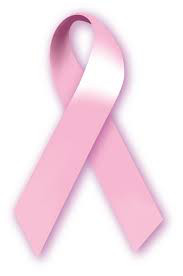
Pink Ribbons Everywhere
By Katharine Boggess | published Tuesday, October 15, 2013 |
Thursday Review Contributing Editor
When October rolls around, and fall colors start appearing in amber, orange, and crimson, it’s time to think pink. October is breast cancer awareness month, and the now-iconic pink ribbon is the symbol of hope and support for those living with the disease, those with loved ones with the disease, and those who seek to find a cure.
A symbol for the quest to cure breast cancer since 1991, the pink ribbon was first used by the Susan G. Komen Breast Cancer Foundation. While other colored ribbons came first (yellow for hostages, red for AIDS), none beats pink for popularity and recognition, in part due to successful advertising done by the Komen Foundation to raise awareness and promote their fund. The pink ribbon symbol has gained popularity and now seems to be everywhere--on shoes, makeup, clothing, and even yogurt.
While the pink ribbon may seem ubiquitous, and a bit frivolous and fun, the truth is that that breast cancer research continues to need funding, and awareness needs to be raised even more. Breast cancer is diagnosed in one out of every eight women, and some estimates show up to 18 percent of those diagnoses ending in death. In fact, breast cancer is the second leading cause of death for women in the United States, right behind heart disease. Those are serious numbers, serious enough that it behooves us all to learn more about the disease and what we can do to help prevent breast cancer and work for a cure.
The disease itself has many forms, some common, and some rare. Sometimes there is more than one type of cancer manifesting in a single breast tumor. The most commonly found types are infiltrating ductal carcinoma (IDC), ductal carcinoma in situ (DCIS), and infiltrating lobular carcinoma (ILC). IDC is an invasive form of cancer, which starts in a breast’s milk duct and expands into the fatty tissue. It can then metastasize, or spread, into the lymphatic system and bloodstream. DCIS is a noninvasive form, which usually does not spread outside the walls of the ducts and into surrounding breast tissue. DCIS is actually considered a precancerous condition, because not all cases develop into an invasive type. ILC, like IDC, starts in one area and then invasively spreads. ILC begins in the lobules. Less common forms of breast cancer include inflammatory breast cancer, triple-negative breast cancer, Paget disease of the nipple, Phyllodes tumor, angiosarcoma, and in addition, there are numerous subtypes.
While there is no way to tell for sure whether one person or another will develop breast cancer, there are risk factors to be aware of, which may increase the likelihood of developing the disease. There are some factors over which we have no control, such as gender, genetics, race, and aging. Women are more likely to develop breast cancer than men, but men are by no means immune. As we age, we are more likely to develop breast cancer, with the risk increasing most dramatically after age 55. Genetics also play a role, with up to 10 percent of breast cancer cases being attributable to gene mutations. Some genetic mutations, such as BRCA 1 and BRCA 2, carry lifetime risks that may be as high as 80 percent. The BRCA mutations are more common in the United States among the Ashkenazi Jewish populations, but anyone may carry the mutation. It is possible to test for the BRCA mutation as well as other genes that are associated with a predisposition. Recently, awareness was raised about the BRCA mutations by Angelina Jolie, whose mother died of breast cancer, and who carries the mutation herself.
Other factors of note include a previous history of breast cancer, Caucasian ethnicity, and dense breast tissue. If you have already had breast cancer, the likelihood of developing another cancer in the same breast is high, 3- to 4- times as likely as for those who have not had an occurrence. White women are more likely to develop breast cancer, but African American women are more likely to die of the disease. Native American women are less likely to contract and die of breast cancer. Those with more glandular and fibrous tissue in the breasts, or dense breasts, are more likely to develop the cancer.
Finding breast cancer early in its development offers the best chance of survival. If breast cancer is detected early, the 5-year survival rate is 98 percent. Early warning signs of breast cancer include a new lump, changes in the size or appearance of a breast, changes in nipple appearance, and nipple discharge. Performing a breast self-examination, or BSE, is an important measure to take. Up to 40 percent of breast cancers diagnosed are discovered during a BSE.
All month long in October, there are breast cancer walks, health fairs, and hosts of pink ribbon products for sale, often with a portion of the proceeds going to the fight against breast cancer. To find out more about breast cancer, preventative measures, early detection plans, and what you can do to raise funds and awareness in your area, three good websites are:
http://www.nationalbreastcancer.org/breast-cancer-awareness-month
http://ww5.komen.org/
http://www.pinkribbons.org/
When the leaves start to change, don’t forget to think pink.
